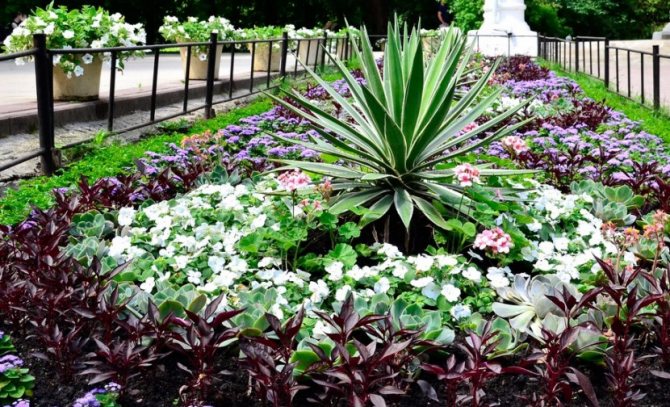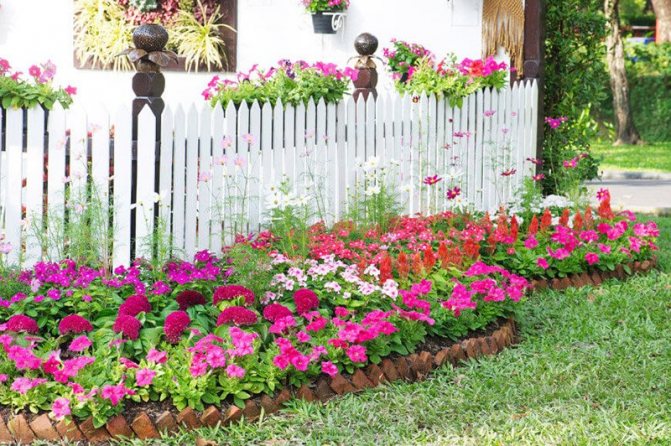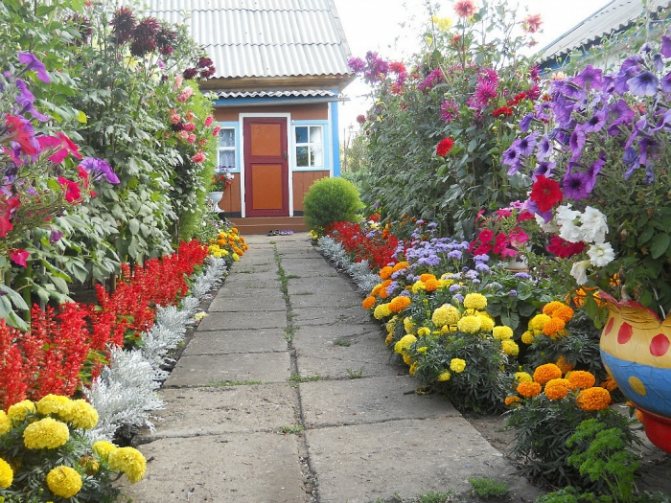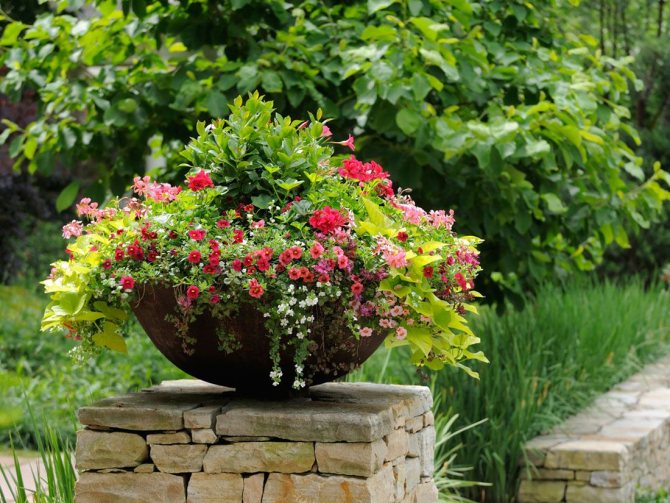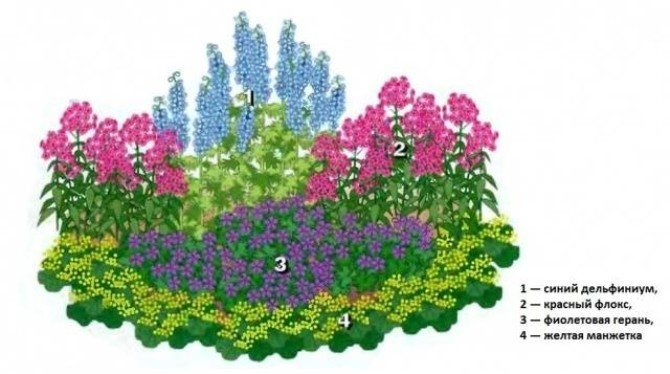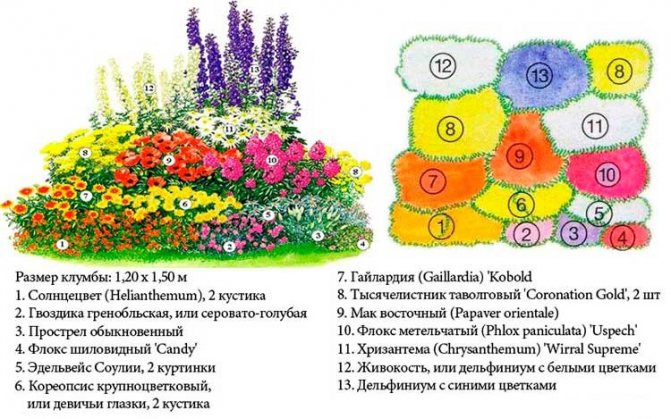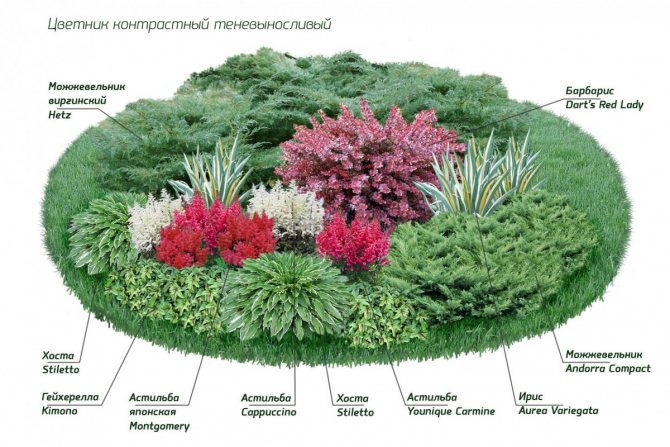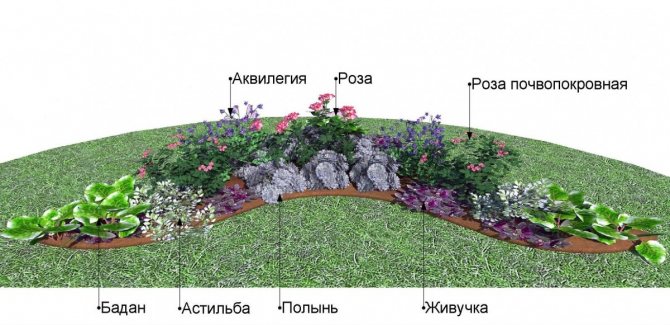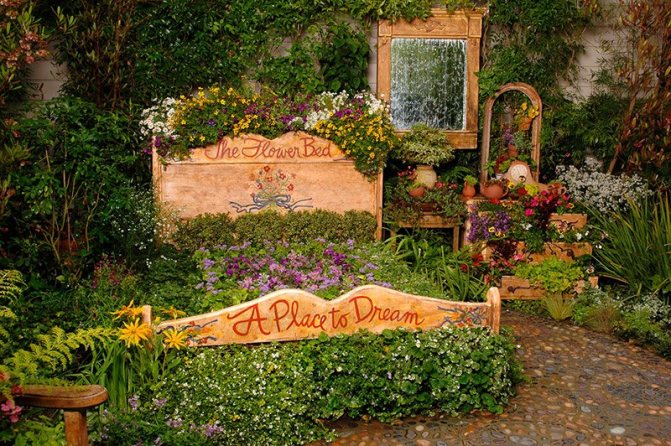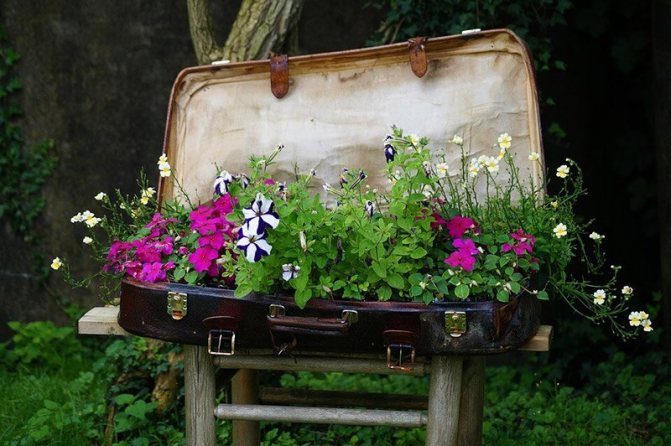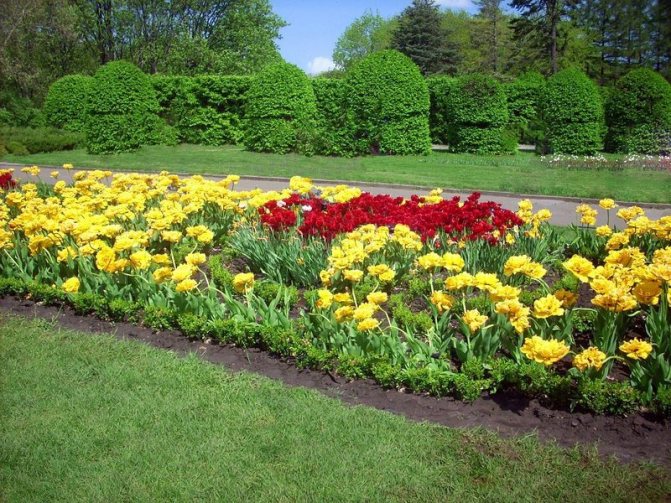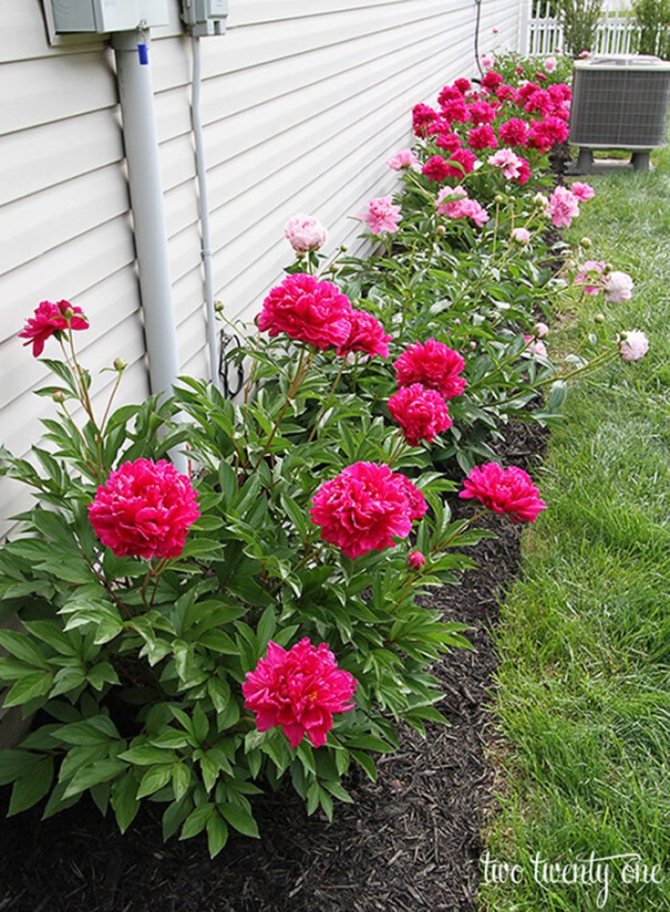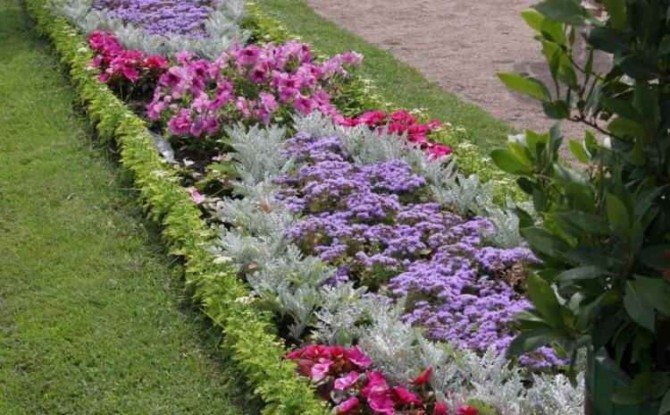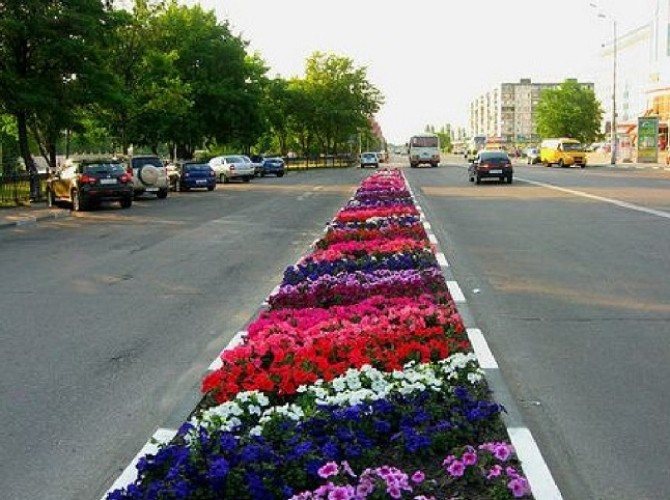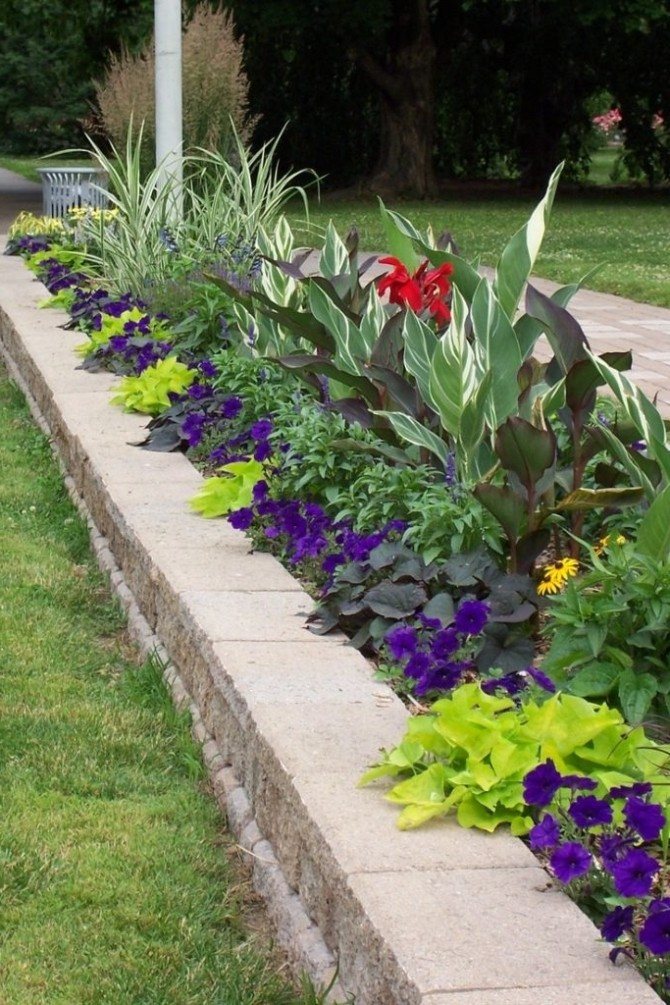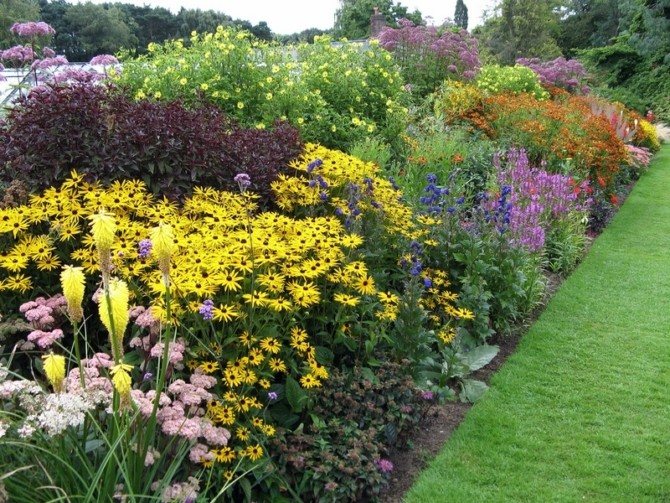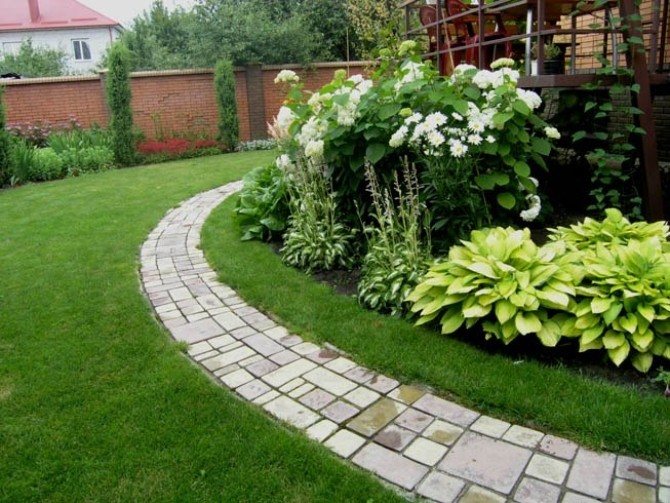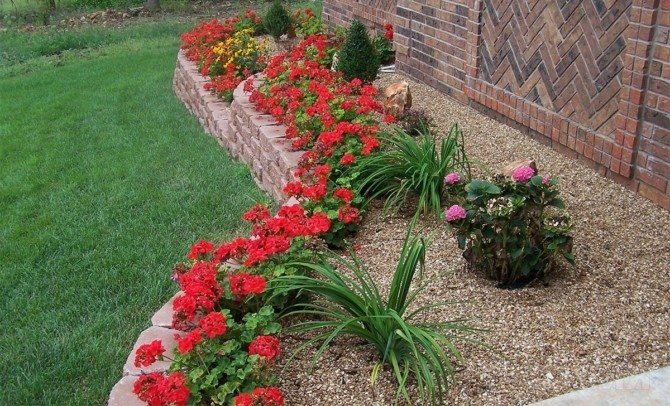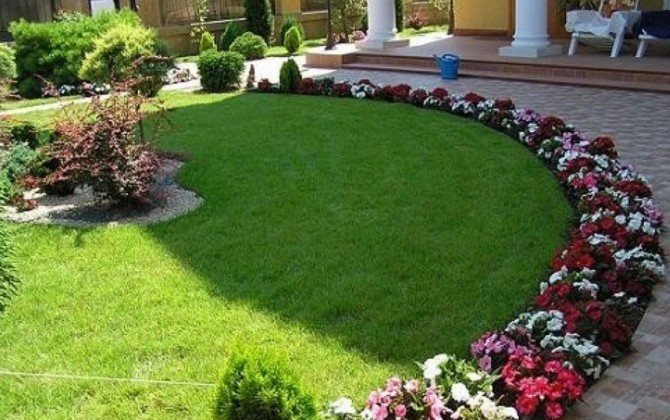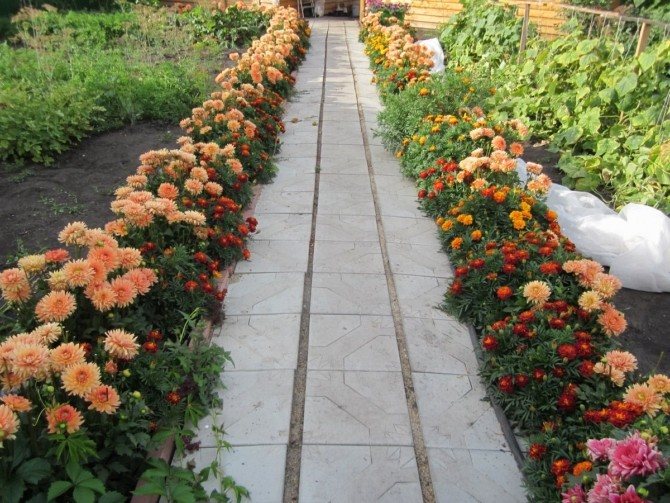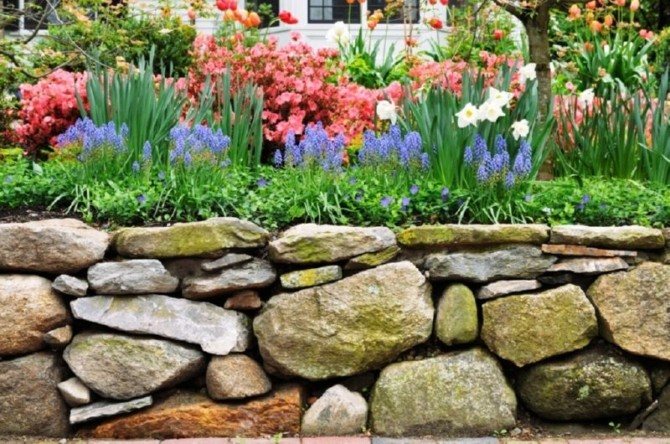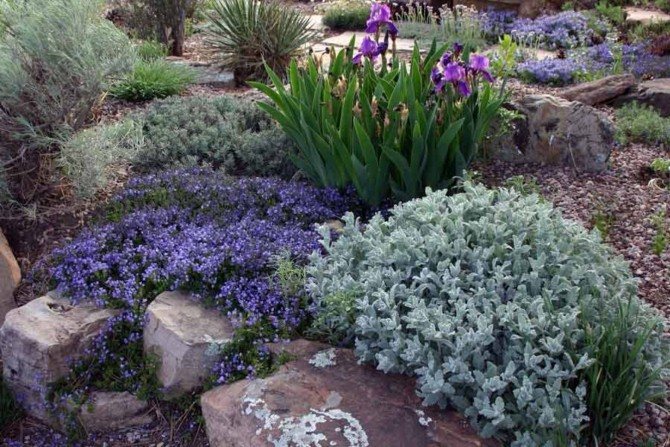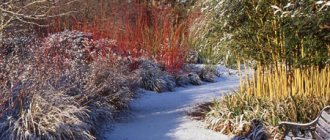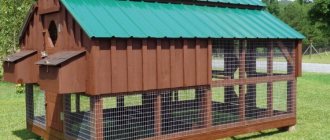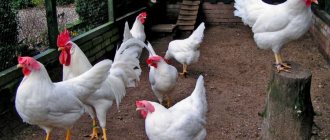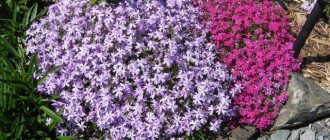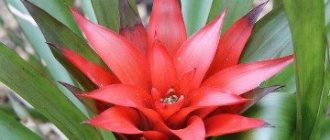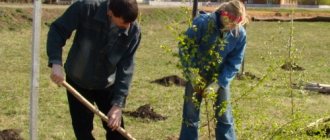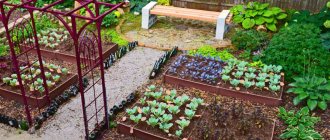Flower garden scheme in the country
In general, a flower garden is a broader concept and, according to the prevailing opinion of experts, includes both flower beds and flowers planted in flowerpots (containers), incl. installed on all kinds of vertical structures, etc. In general, the layout of the flower garden can be anything.
Read also Planting potatoes: preparation, processing, methods, full instructions
A flower bed is a piece of land, in most cases of a geometric shape and with a closed contour (circle, oval, square, rhombus, rectangle), on which it is customary to plant annual plants or combine annuals with perennials. We offer you several simple, and at the same time beautiful schemes for arranging a flower bed in a summer cottage or personal plot:
Which plants to choose
In order for the flower garden to enchant guests and delight the family for a long time (for example, peonies and clematis have been growing in one place for several decades), select only climate-resistant, unpretentious plants. Having landed extremely liked, but demanding care and shelters, which do not tolerate Russian winters, you will carefully look after them.

However, after 3-5 years, removing dead bushes that have not survived the winter in the spring, you will understand that there is no more strength to take care of whims. At this moment, you will come up with a decision to replace all "southerners" with zoned ornamental plants. So why not immediately look at those flowers that do well in your climate?


The initial selection of suitable planting material for flower beds, varieties and species that are resistant to the climatic conditions of the region, has many advantages:
- Facilitated maintenance (no construction of serious winter shelters is required).
- Preservation of one's own nervous system (lack of worries about poorly sheltered or at the wrong time open plants, fear of damping out, getting wet, damage by moles or mice, who love to manage in winter under shelters).
- Lower financial costs (there are no costs for the purchase of new replacement plants).
- Reduced labor costs (there is no annual excavation of "dead" specimens and planting new ones in their place).
- A more neat appearance of flower beds in winter (flat snowy spaces with shrubs covered with hoarfrost or snow caps look much more presentable than wooden boxes or arched structures throughout the site).


Every enthusiastic summer resident, who feels like a landscape designer of a particular site, needs rest. Without time to admire your own achievements, there will be no pleasure from the completed task and country life in general. Therefore, plant more unpretentious plants, they will allow you to enjoy the surrounding beauty more.


Rabatka flower bed with photo
Flower bed rabatka very comfortable and looks great on the ground. Its essence lies in a rather narrow (from 50 cm to one and a half meters wide, depending on the free area) strip of cultivated soil, usually located along a garden path or alley. To decorate a rabatka, they take several combined varieties of plants and plant them in the form of geometric shapes or ordinary stripes.It should be borne in mind that the classic rabatka tends to use plants of the same height, with similar characteristics and flowering at the same time (so-called "regular flower beds")
The device and schemes of flower beds
Flower beds are classified into two completely different types:
- Regular. These are such flower beds that have clear boundaries, that is, each variety grows separately, in no way mixing with the other. Here it is imperative to take into account the flowering period. This design can be made from tires.
- Irregular - a collection of plantings in an arbitrary order. Flowers are planted so that after the end of flowering of one, another plant variety begins to bloom. This is the simplest option for arranging a flower bed, ideal for a beginner.
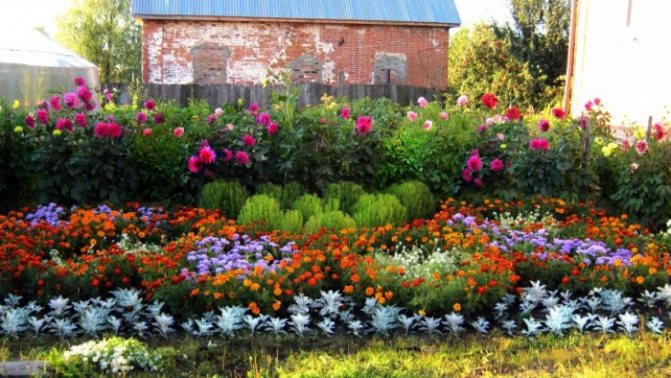

The classic design is pink and white. If you learn to combine two colors in a certain order, you can get a very good flower bed in terms of decorative qualities. The background will be the white bloom, and the pink will add the necessary accents.
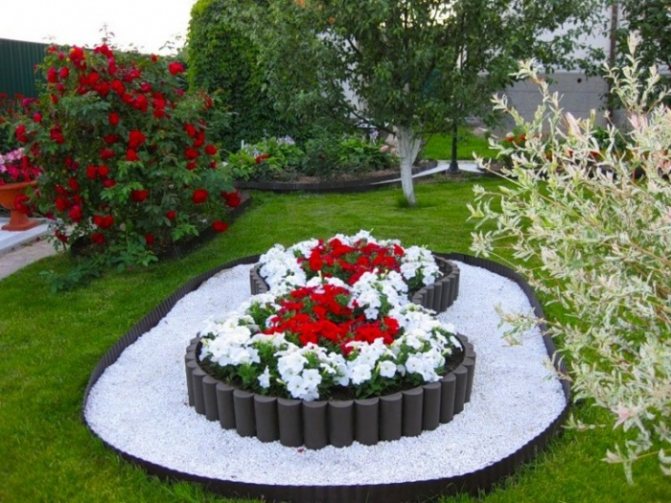

This can be done, for example, with the help of such planting: stunted white flowers or pink zinnias are planted against the main background, and Drummond's phlox is planted along the edges and in the background. A car tire will help to make a perfectly level planting.
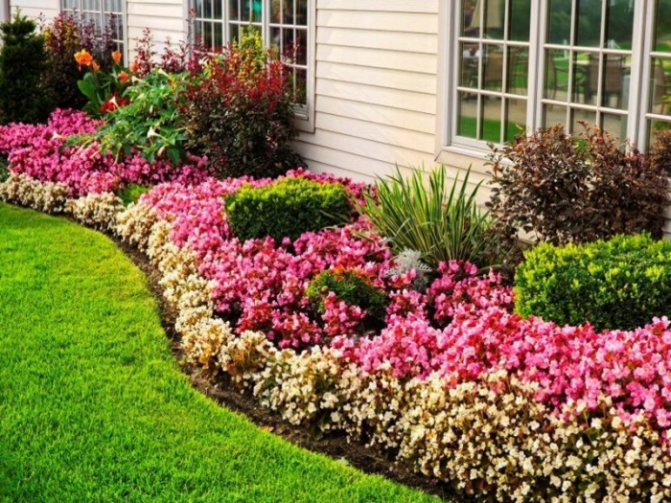

The combination of annuals in a flower garden in a bright red-orange color scheme also gives an unrealistically beautiful result. The background is filled with amaranth with a small amount of sunflower, dahlias go to the general plan, and the empty spaces are filled with escholtia.
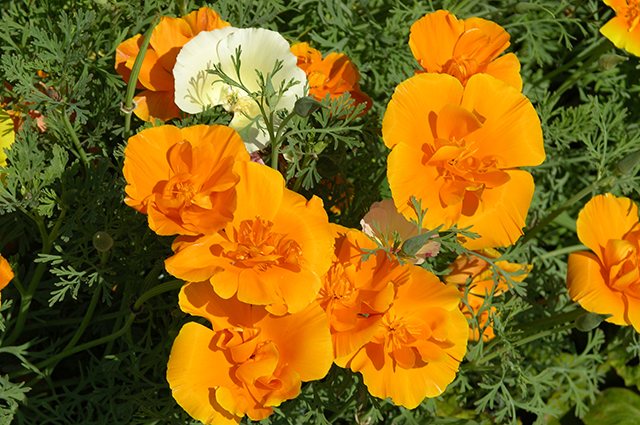

For edging, you can use matching marigolds and asters or other plants. This idea for arranging a flower garden can be implemented in the shortest possible time.
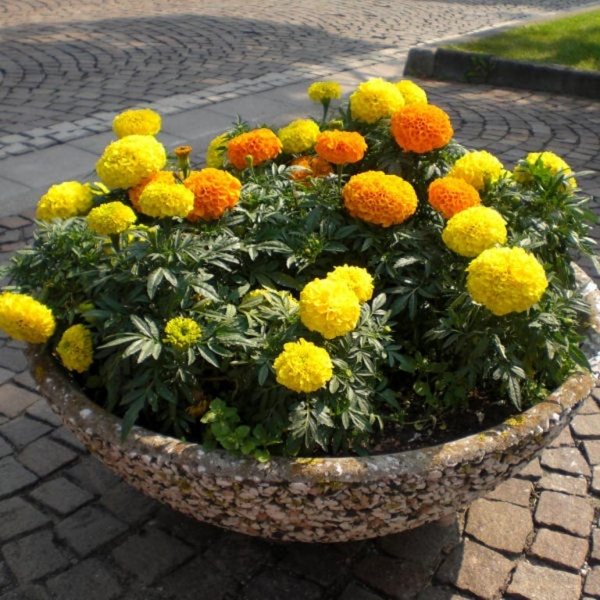

You can make a flower bed in completely different variations, but if you do not have enough experience, you can use ready-made plant combinations to avoid the unpleasant consequences of creating yourself against the rules. The simplest option is to create a flower garden from tires. Here are some ready-made options for flower beds in the country for beginners with a photo:
- The central flower bed is a collection of plants presented in the form of a circular flower garden. In the center are plants with a dark color of leaves, these can be cannes, and then also in a circle one row of gnafalium and snapdragon.


- The Viennese flower is a set of plantings in the shape of a star with six ends. The center is formed with white levkoy, and the shape is given with the help of forget-me-nots and primroses with violas or other plants.
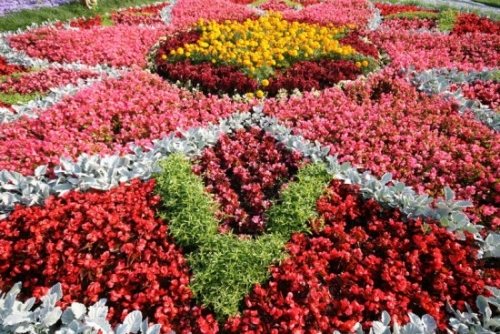

- A whimsical pattern is a circular flower bed with undulating plantings of perennial flowers. The center is occupied by hamerops, and the general background is complemented by coleus or dahlia zinnias. To give more elegance, begonias or variants of other similar plants are planted.
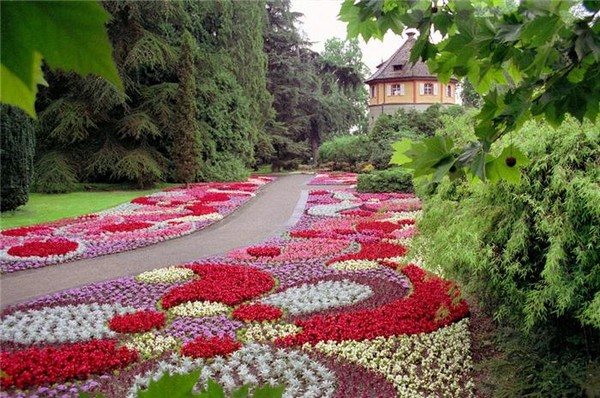

- Arabesque is a flower garden of low-growing flowers in the form of any animal or bird.
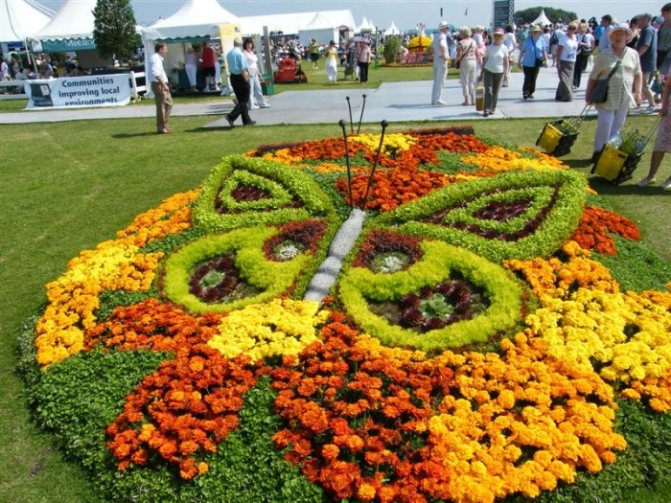

- The floating flower bed is an intricate piece, which is a pond with aquatic plants, decorated around the edges with various varieties of flowers. An amazingly beautiful flower garden.


Mixborder scheme with photo
With all the splendor of the strict lines, the ridges in a private courtyard are more appropriate, it seems to us, and they are more popular. mixborders - flower beds, the stylistic features of which are included in the name. “Mix” - dissimilar plants are used for registration: perennials and annuals, of different heights, outwardly dissimilar, blooming at different times of the season. "Border" - characterizes the peculiarities of the location of the flower garden: along alleys, buildings, around lawns, etc. As a rule, mixborders are much easier to set up and look "livelier" in comparison with a refined rabatka.
When planning plantings of different heights, you can use the correct rule, according to which the tallest plants are in the middle (or at the far edge, if the flower garden is located, say, near a wall), the lowest are on the edge, like rounded, bushy ones.
Read also Growing and harvesting potatoes. Terms, methods, adaptations. Expert advice
Flower bed of annual plants
We have already touched on the issue of the device of an annual bed, but the choice of plants for it is a very important matter. Let's consider in more detail all the nuances of floral diversity.
Below we list the most popular types of annuals that are suitable for filling flower beds with your own hands. For convenience, we have indicated the height of the plantings, as well as the flowering period:
- Ageratum (20cm - 80cm., 1st decade of June - up to frost).
- Marigolds (20cm - 110cm, June - September).
- Gatsania (30cm - 40cm, 2nd decade of June - September).
- Iberis (reaches 45cm, 1st decade of June - up to frost).
- Clarkia (30cm - 50cm, July - September).
- Lobelia: both bush and ampelous bloom from early June to October. Height reaches 20cm.
- Nasturtium. The bush reaches 55 cm, and the shooting one - up to 4.5 meters. Blooms with the first warmth and lasts until frost.
- Petunia. Ampelnaya grows above 1 meter, and bush has a height of 15 to 85 cm. The activity of both species falls on the beginning of the heat and until the end of October.
- Tobacco (85cm, early June - October).
- Zinnia. Different varieties grow from 15 to 70cm. Blooms from June until frost.
- Escholzia or California poppy grows from 25 to 65 cm. Flowering time - from early June to frost.


To equip a flower bed on your own, you should also take into account a number of well-known but important rules:
- Tall plants should be planted either in the center of the flower bed or in the background.
- When approaching the border of the flower bed, plant flowers with a uniform decrease in height.
- Low-rise flowers in the form of a border are ideal for decorating the foreground.
- The lower the plants, the higher their planting density.
Below we will consider the popular patterns of annual flower beds. You can choose the design you like and arrange a similar flower garden in your country house.
Scheme 1
A blue-violet shade of a flower bed in a garden can be created by using the following plants:
- lobelia;
- alissum;
- petunia;
- ageratum.
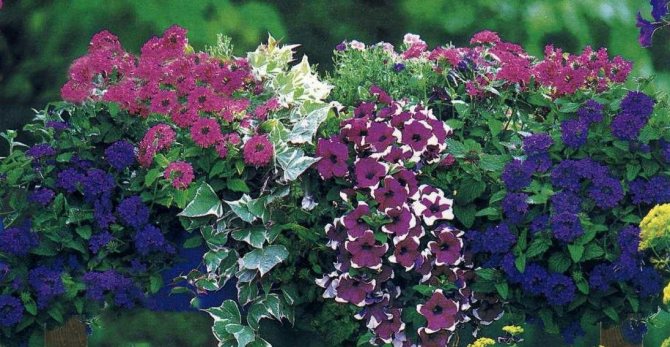

In the central part of the flower bed, the height of the plantings reaches 25 centimeters and decreases closer to the edges to 10 cm. The composition, made up of the listed flowers, will delight the eye from the beginning of the heat until mid-September.
Scheme 2
Beautiful butterflies will fly with pleasure to the bright and colorful flower bed. For its registration you will need:
- delphinium;
- cosmeya;
- marigold;
- ageratum;
- begonia;
- verbena;
- petunia;
- tobacco;
- dahlias.
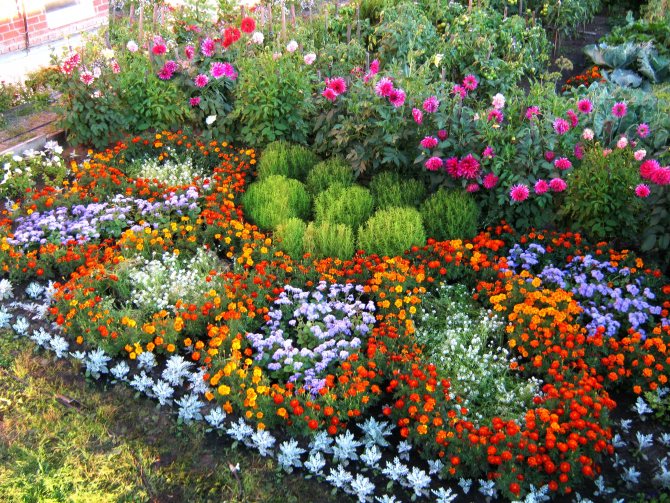

Scheme 3
You can create a round flower bed using the following scheme. For a compositional solution you will need:
- alissum;
- ageratum;
- petunia;
- marigold.
In the central part, the height of the stands is about 65 cm, and closer to the edge, it decreases to 15 cm.
You can create charming flower beds in the country with your own hands, if you apply skillful hands and diligence to this business. In our publication you will find a number of photographs taken by gardeners and gardeners. Each of these photos is the result of caring and sensitive hands, as well as a kind heart.
Flowerbed border
Border also belong to an independent type of flower beds, and for all its simplicity, it is able to noticeably decorate the territory. The essence of the border flower bed is simple - it is a continuous narrow strip with low plants (not necessarily, by the way, blooming) of the same species. The main task is framing flower beds, mixborders, lawns, garden paths. It is worth noting that the main task of a flower border is to emphasize the contours in the right places, however, here it is important not to overdo it.
Master Class. Flowerbed "Palette" with your own hands
We are all artists at heart, and therefore it is imperative to be creative in creating something beautiful (including an ordinary garden flower bed).


Flowerbed "Palette" with your own hands
To make such a flower bed yourself, first decide on the flowers that will decorate it.
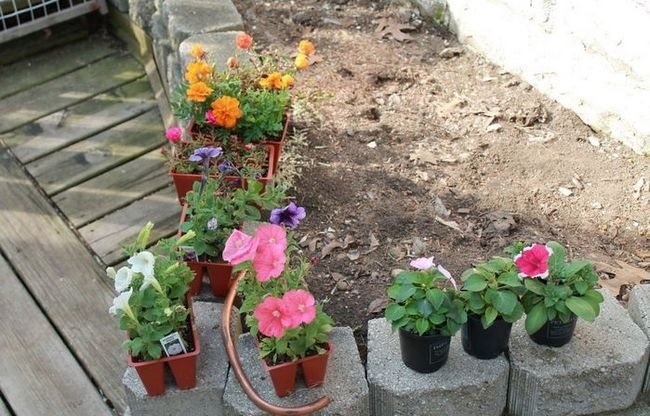

First you need to decide on the colors
In addition, you will need pots in which the seedlings will be transplanted and where they will bloom throughout the summer.
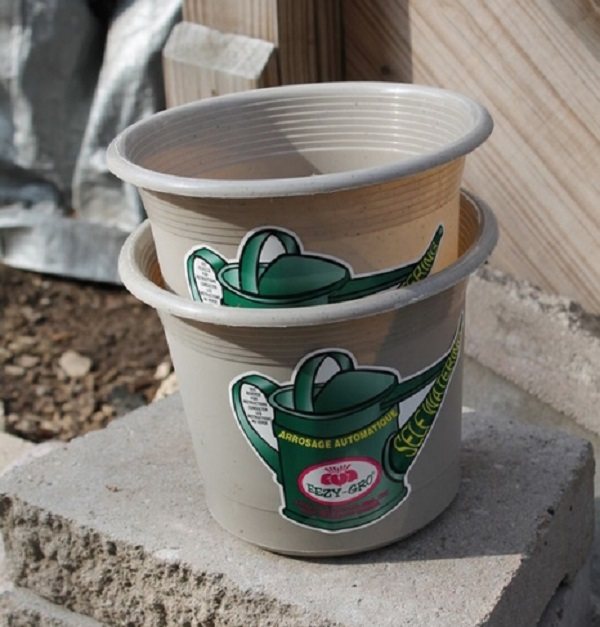

Flower pots
Also prepare a rake and a shovel - they will also be required.
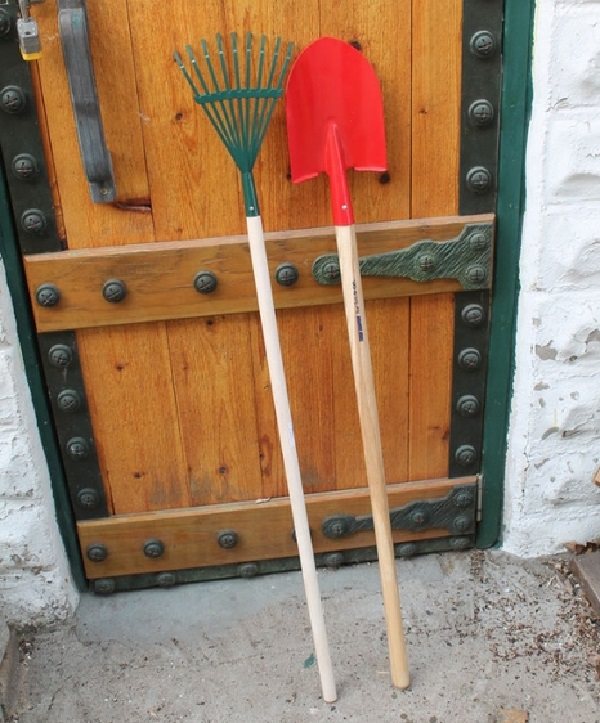

Rake and shovel
As a base, you can use a sheet of plywood, polystyrene (not recommended, since the material is light, it can be blown away by the wind) or a furniture board.
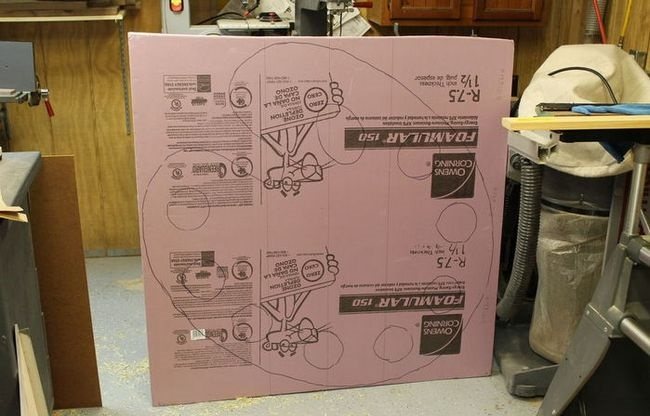

The basis for the future flower bed
Prepare the clamps in advance to secure the base.
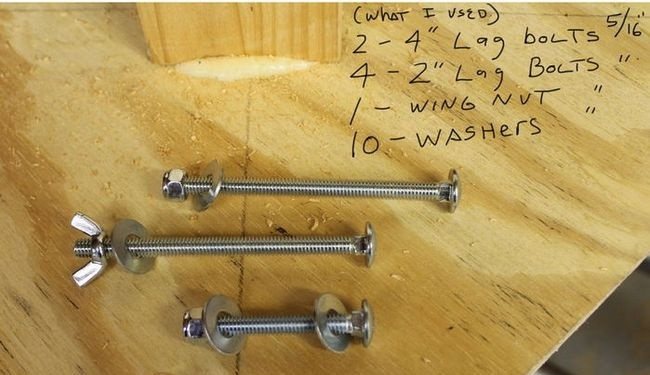

Fasteners
You also need paint or stain, varnish.
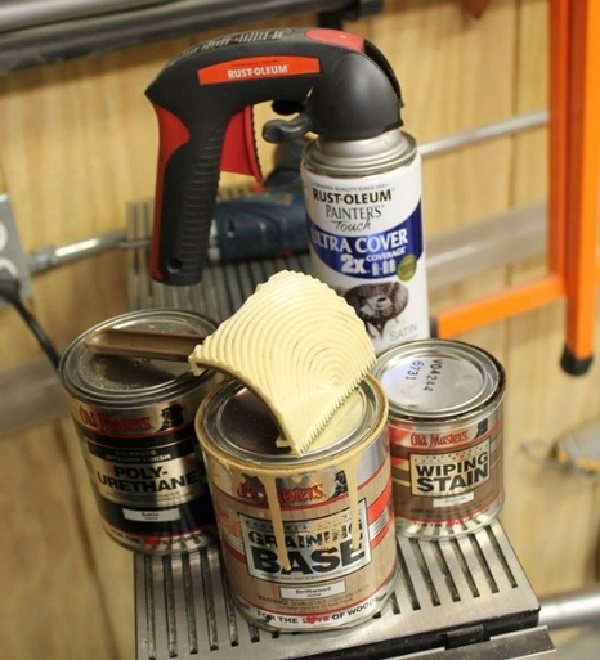

Materials for painting
So, first, take a base and draw a palette on it with a marker.


Painted palette
Then cut out the shape with a jigsaw.
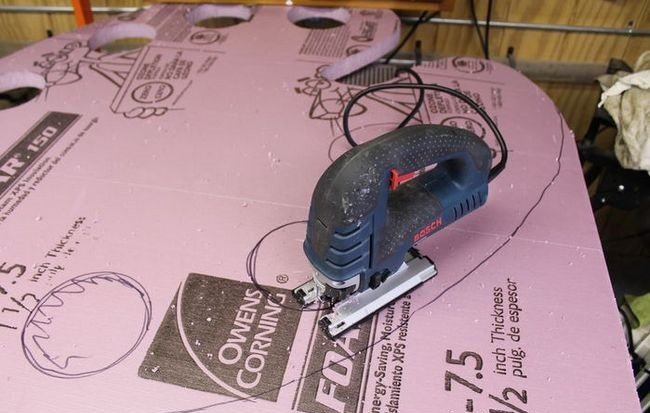

The palette is cut out
The finished base should look something like this.


Ready base
After that, make the attachments. The example drawing below shows how they should look.
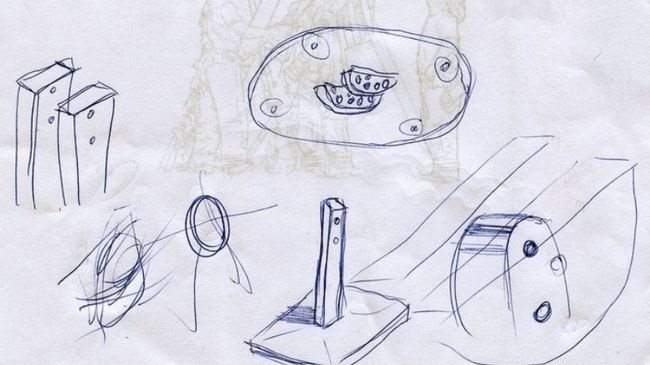

Approximate drawing of fasteners
For the manufacture of flower bed fasteners, use bars.
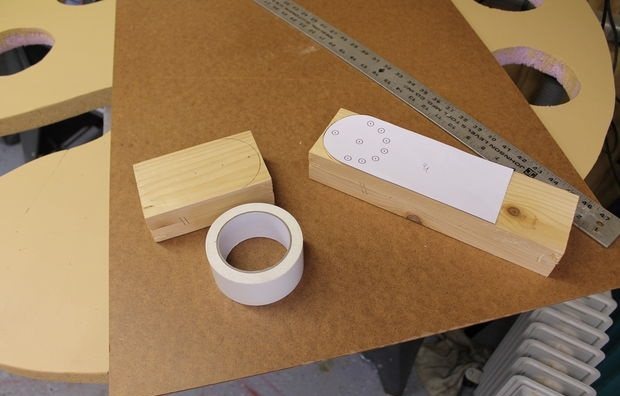

Materials for the manufacture of fasteners
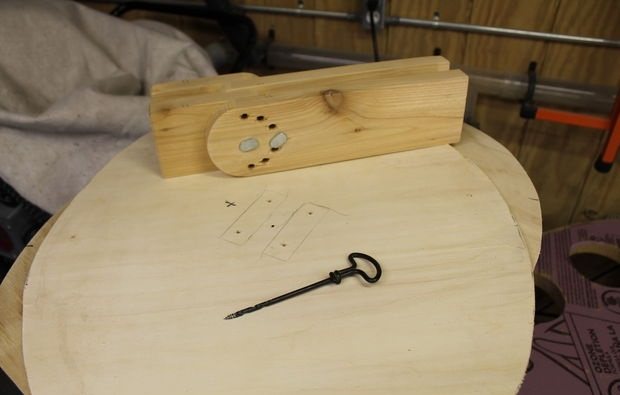

Markup
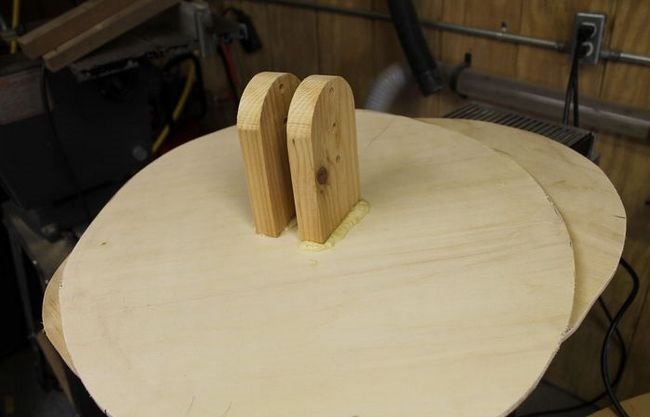

The bars are fixed
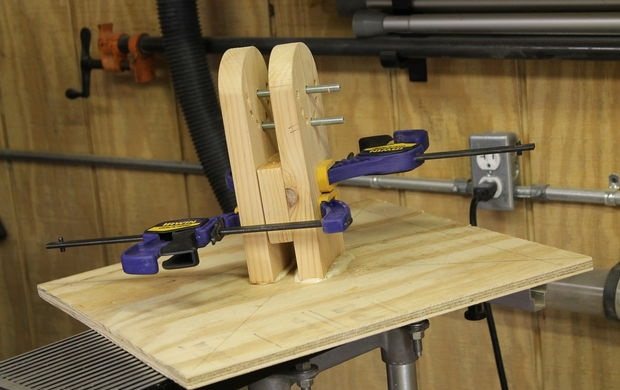

Making a second mount
Using clamps, attach the fasteners to the base of the future flower bed.


The mount is installed on the base
Using pipe cuttings, you can make rake and shovel stands.
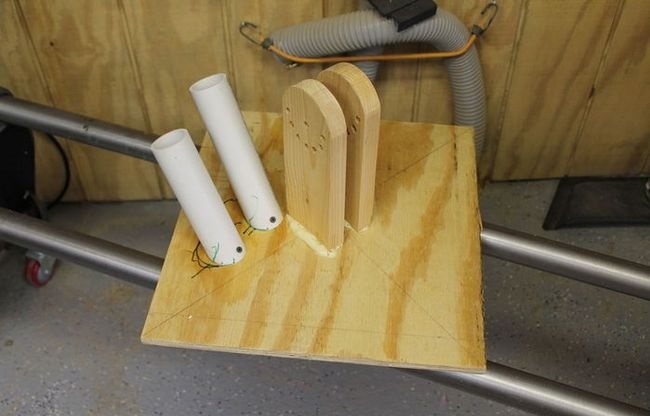

Shovel and rake stands
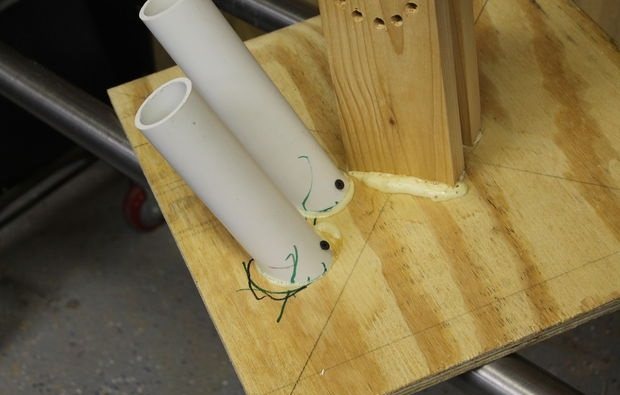

Another photo of the coasters
Then decorate your garden tools - for example, paint them with polka dots or paint them in one color.
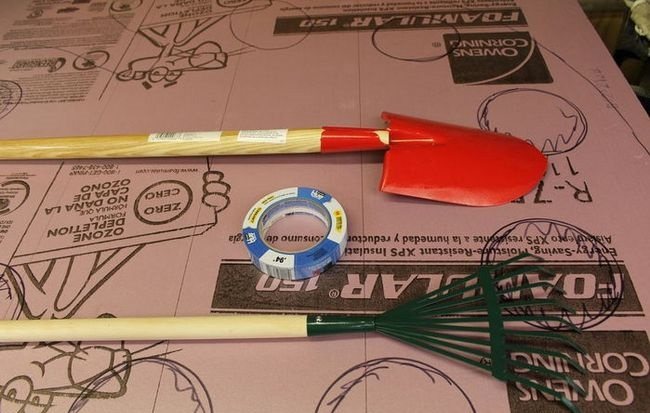

The shovel and rake need to be decorated
Then take the base of the flower bed and, if a furniture board or plywood was used in the manufacture, cover it with a stain, and then varnish.


The main part of the flower bed, if it is made of plywood or furniture board, is covered with stain and then varnish
Wait for the cover to dry and set up the flower pots. Everything, a beautiful flowerbed "Palette" with your own hands is ready!
Video - Making a flower bed from a wheel
Rockery flower garden
Recently, it is gaining more and more popularity rockery - a type of flower beds, in the design of which natural stones are actively used. This is a complex structure, which, however, is quite within the power of anyone to build - there would be a desire, because “difficult” does not always mean “difficult”. Rockeries usually imitate rocks, mountain ranges, and therefore belong to multi-level flower beds, which can be clearly seen in the photo. "Popularly" they are also known as "alpine slides", which is not entirely true: rock gardens are distinguished by strict requirements for the planted plants - these should only be representatives of the flora of alpine meadows and foothills, which is practically impossible at home.
New life of old things - we use the means at hand!
People often transport unnecessary things to the country. Various chests, boxes, chairs, shoes and clothes - all this is living here its last days, to finally dry up or burn in the fire. But you can also make beautiful and original flower beds from old things!
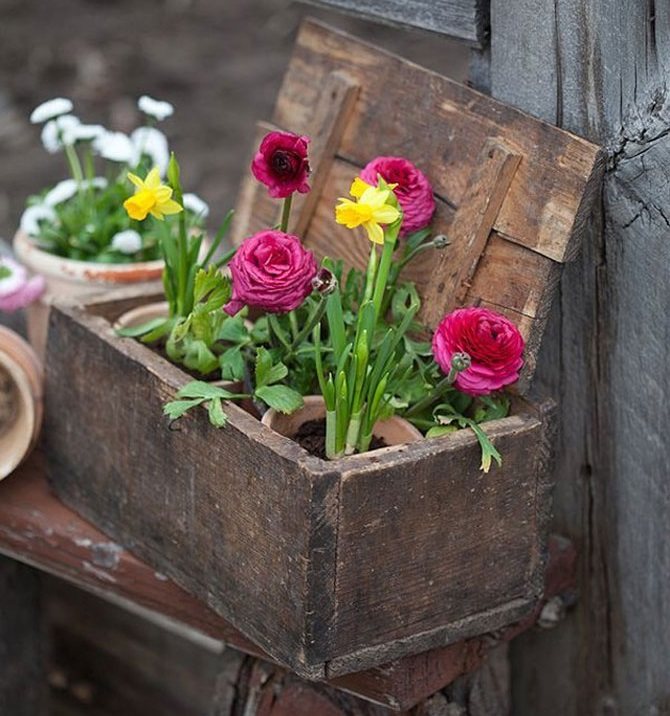

How to make a beautiful original flower bed from scrap materials
Some flowers spend the winter in an apartment, and they are transported to the site only in the summer. But they don't have to be planted in the ground - you can leave them directly in the box, and then, when autumn comes, move them back to the house.
Boxes can also be used to create vertical flower beds. These conditions are ideal for hanging crops and succulents. You can hang these structures on a wall, fence, or other vertical surface.
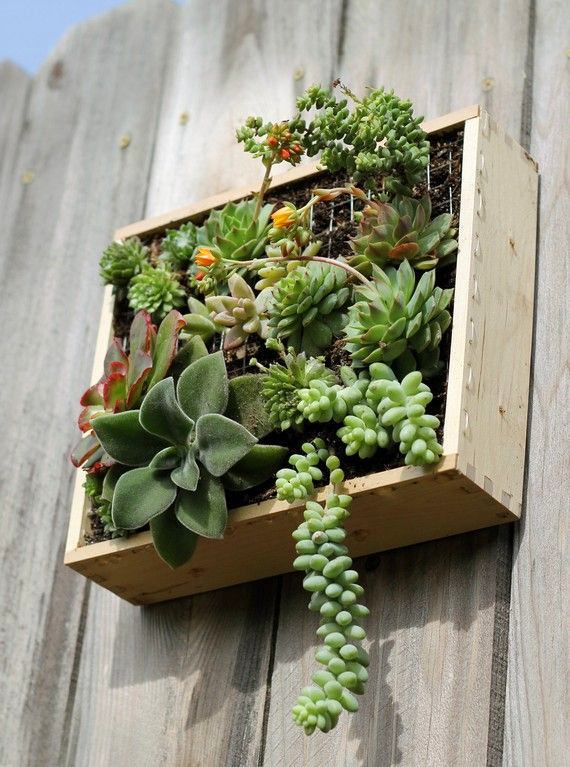

The plant box can be used as a vertical gardening bed
If you have drawers from old dressers or nightstands lying around, do not rush to send them to the landfill - instead, use them to organize a compact flower bed. The color and shape of the boxes may vary, as well as the general style. But they will all be harmoniously combined with colors.


Use of drawers from old bedside tables, tables, dressers
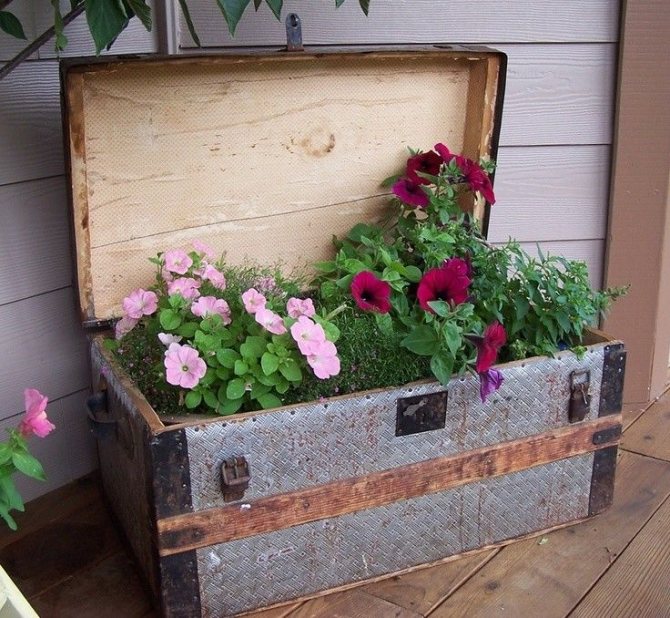

Flower Treasure Chest
Sometimes even such seemingly useless things as old shoes can find a new life. You can plant flowers there, and then hang your shoes somewhere (even by the laces). At the same time, the older the shoes, the better - there will certainly not be stagnation of water in leaky shoes.


Old shoes as a flower bed
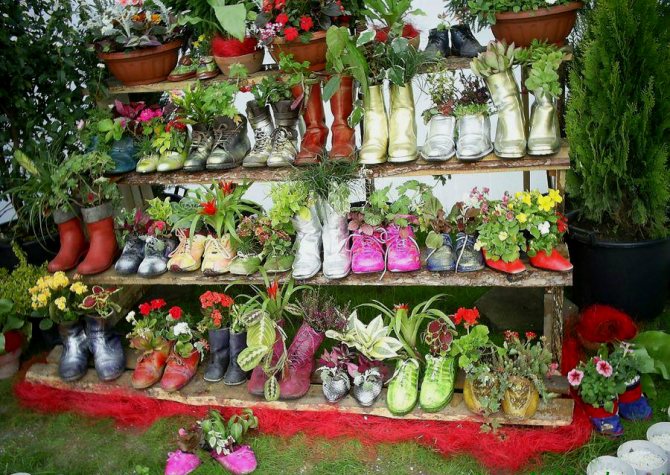

Bright flower garden from old shoes
Another option for creating an original flower bed is to use an old iron cage. Plant climbing crops in it and hang it on a tree or inside a gazebo.
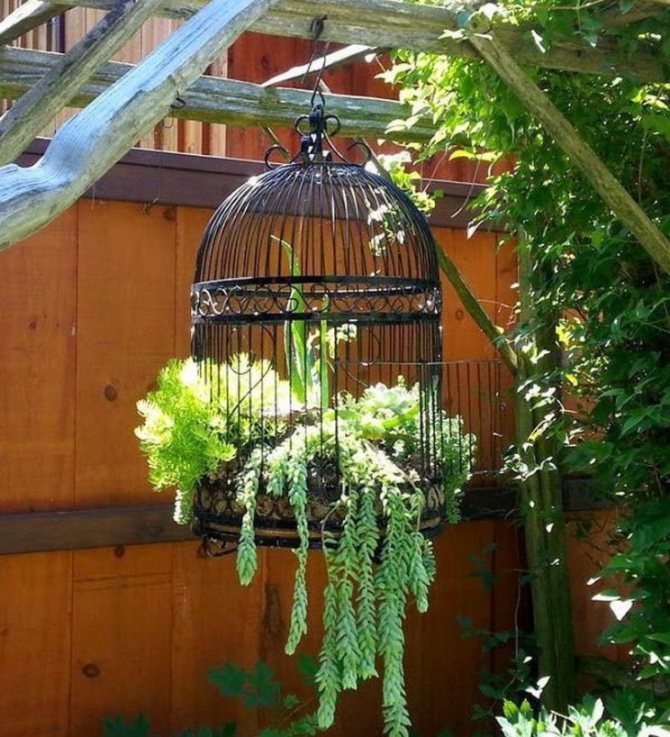

A flower bed from an old metal mesh
Very unusual flower beds are also made from glass wine bottles. With this you are guaranteed to surprise your guests! But be careful to remove the bottom or you may cut yourself.
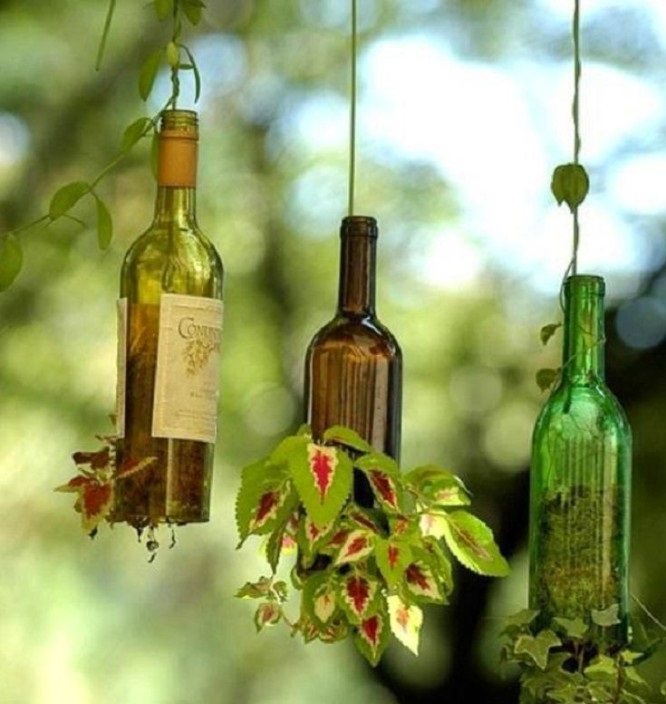

Mini flower beds - a small garden right in a glass bottle
A small but very functional flower bed can be made from a piece of burlap. Make a bag out of the material, hang it, for example, on some kind of post. Tellingly, it is suitable both for flowering crops and for scented herbs (you can add the latter to tea directly from the "garden").
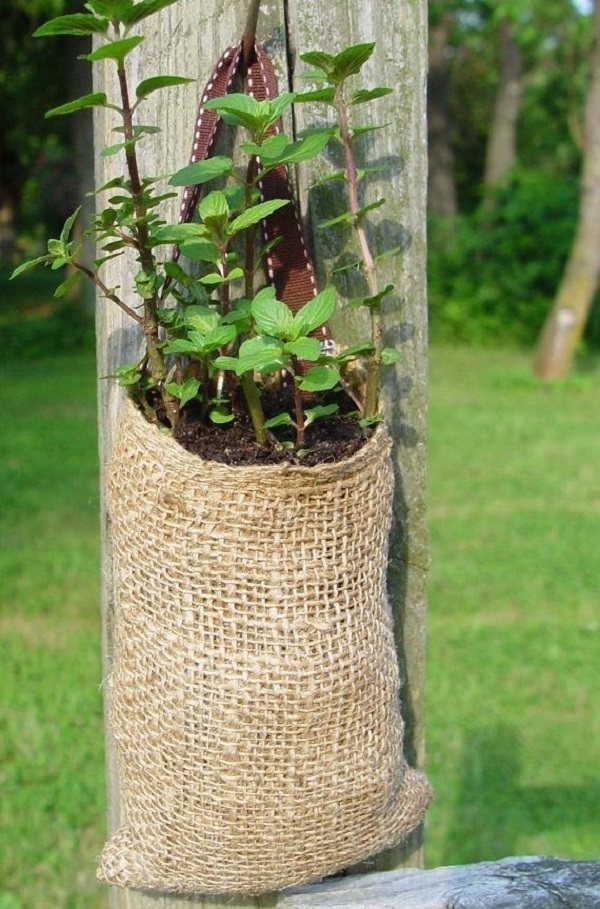

Old burlap bag as a flower bed
To create flower beds, those things that just lie on the street can also be used. A vivid example of this is a dilapidated log. Take it, cut out a longitudinal groove and plant flowers there (this option will be described in more detail below).


A flower bed from an old log
A stump that has not been removed can also turn into a flower bed. Tie pots to it with wire, plant spectacular falling flowers there.
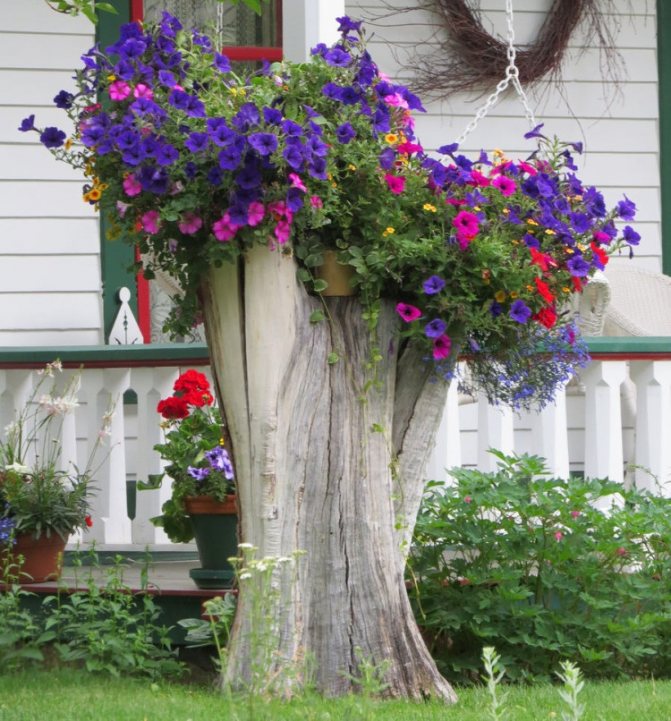

If a stump remains from a felled tree, which you did not dare to uproot, you can arrange an excellent flower bed on it
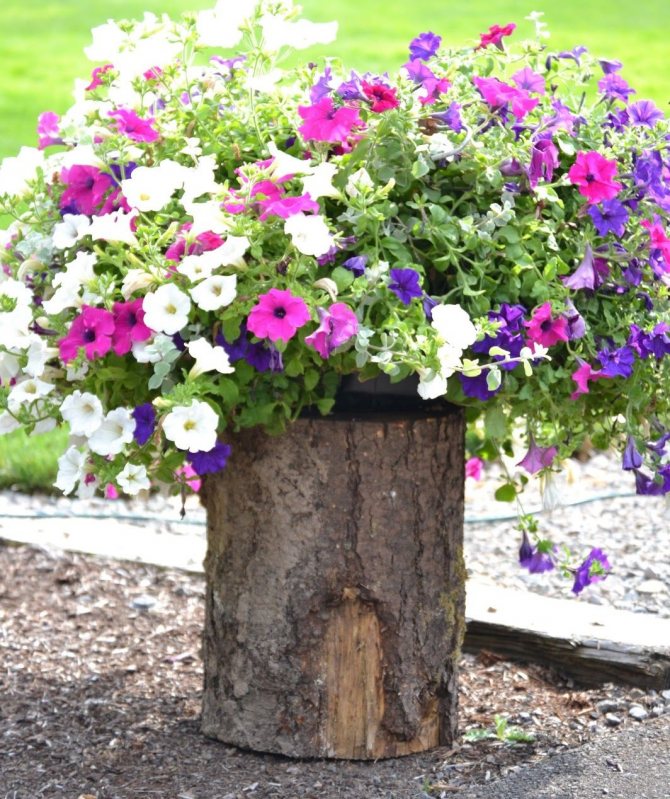

Curly tree stump
But another option is a milk river, as if pouring out of a can. But in this case, it is very important that the green background is monochromatic.
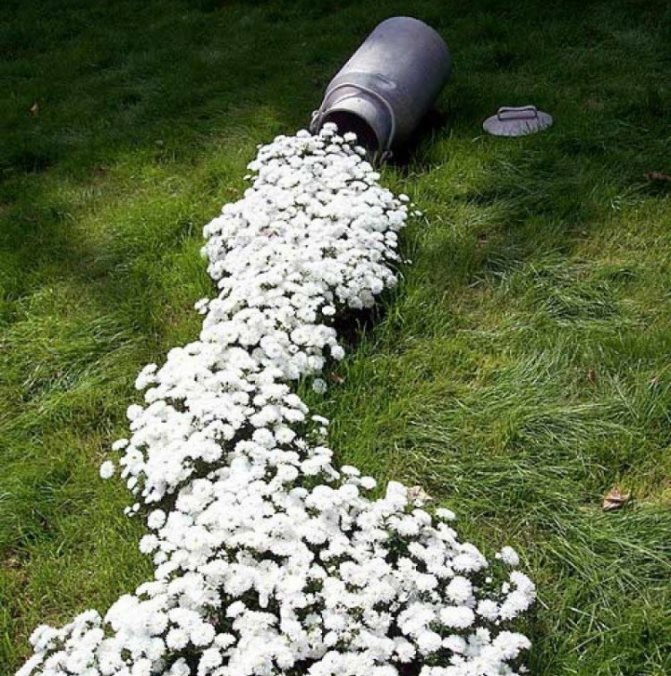

Flowerbed in the form of a milk river
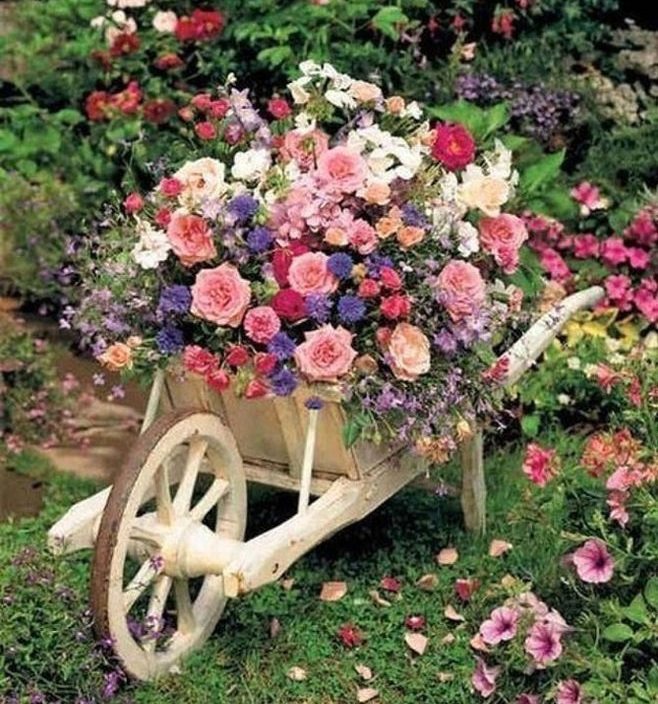

Flowerbed-cart
Is your old bike no longer a means of transportation? But you can turn it into a highlight of your garden! Paint it, and instead of the trunk, install such a container with flowers.
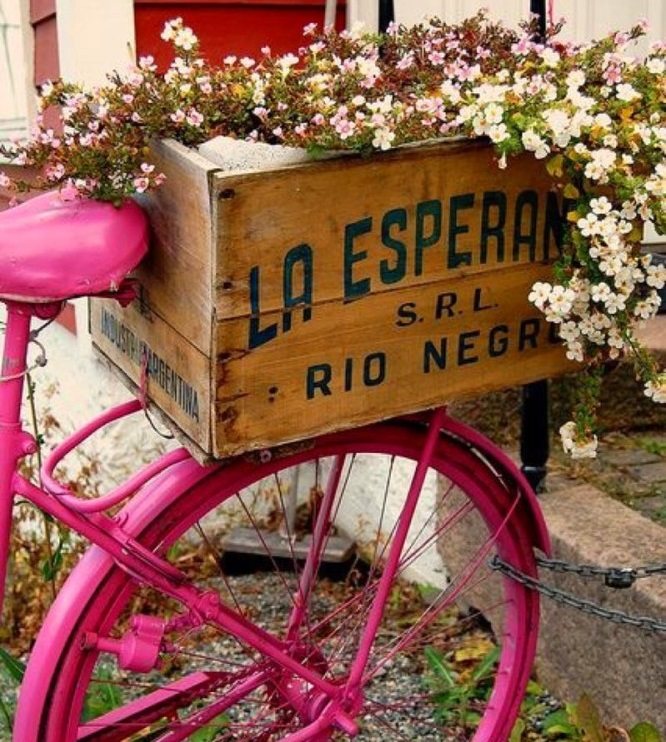

Old bike as a flower bed
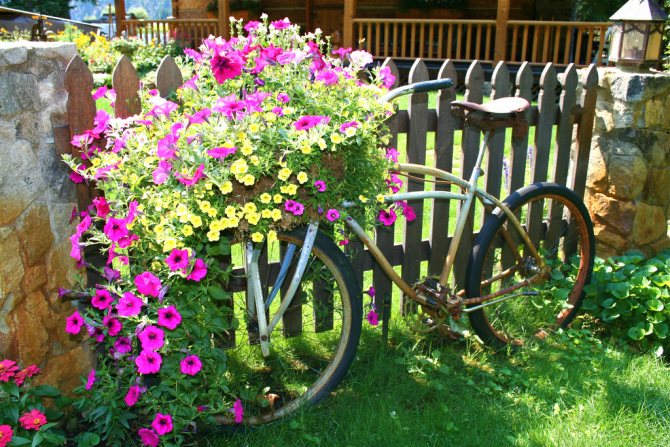

Custom solution for a mobile flower garden
The next example is a complete composition. Combine old garden tools with flowers, experiment.
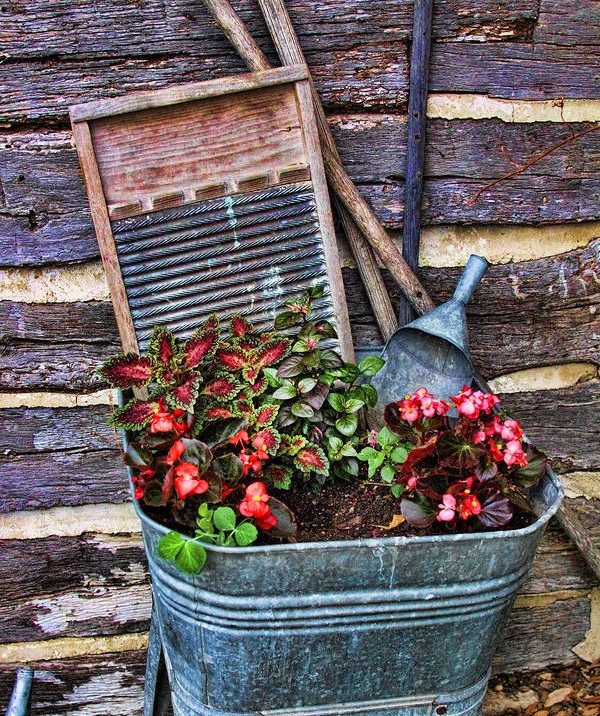

Composition with garden tools
A massive stone vase will also look good in the form of a flower bed. Alternatively, you can use a large clay pot for this purpose (this can stand in the open air for several seasons).
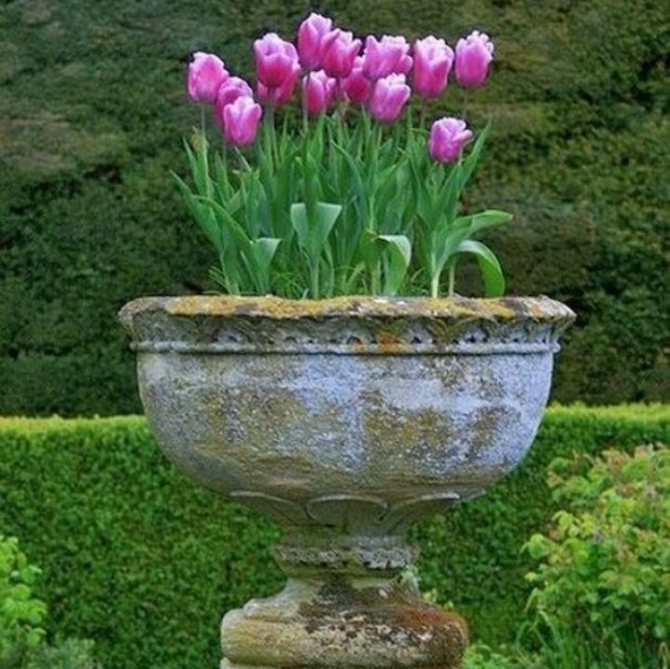

Old huge stone vases will look great as a flower bed.
Today, mailboxes are almost never used, but you shouldn't throw your own! Make such a compact flower bed out of it and hang it on the gate.


Flowerbed from mailbox
The bed in the image below can be considered a complete flower garden. The composition is complemented by a mosaic floor and a chest of drawers.


Flower arrangement with bed
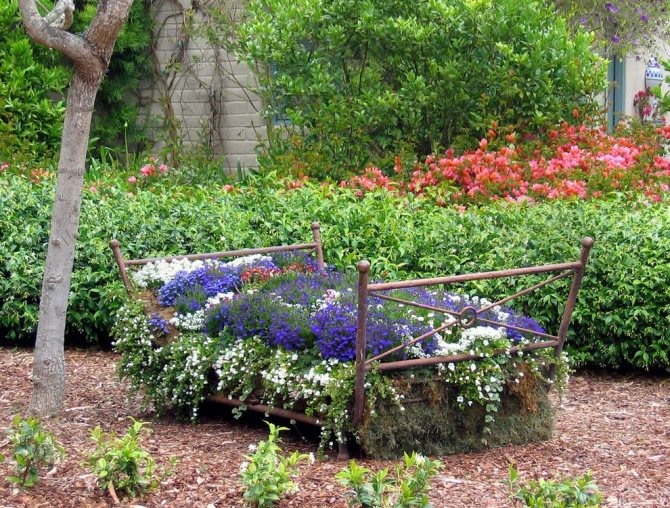

An old iron bed is a great basis for a chic flower garden
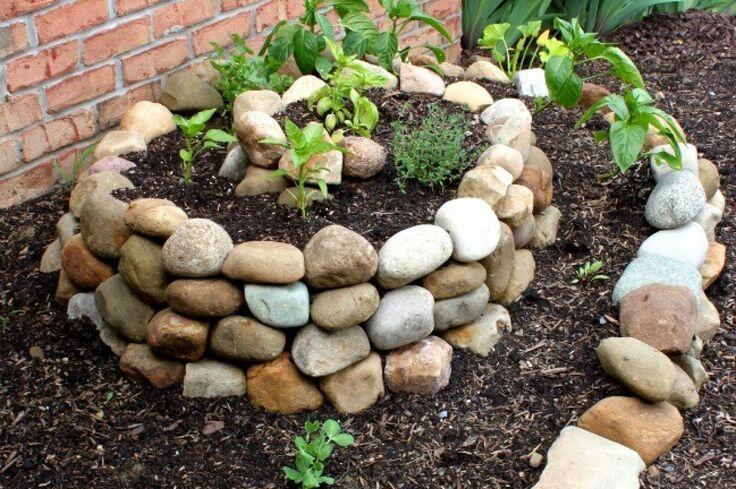

Multi-tiered flower bed of large stones
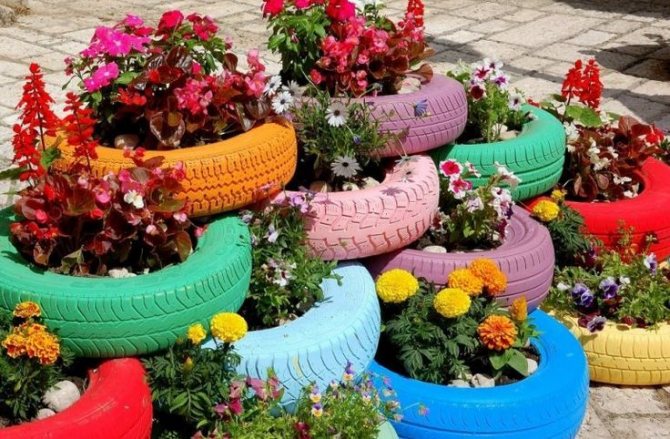

Tire flower garden multi-tiered
Video - Making flower beds from old things
Video description
In the video, the specialist talks about how to properly arrange a beautiful flower garden:
Hardy and unpretentious ornamental plants that do not lose their attractiveness during the warm season, that can stand out from other plants due to their individuality, are suitable for creating ribbon flower beds. Usually they have attractive not only the bud, but also the crown, as well as foliage. It is she who determines the shape of the border.
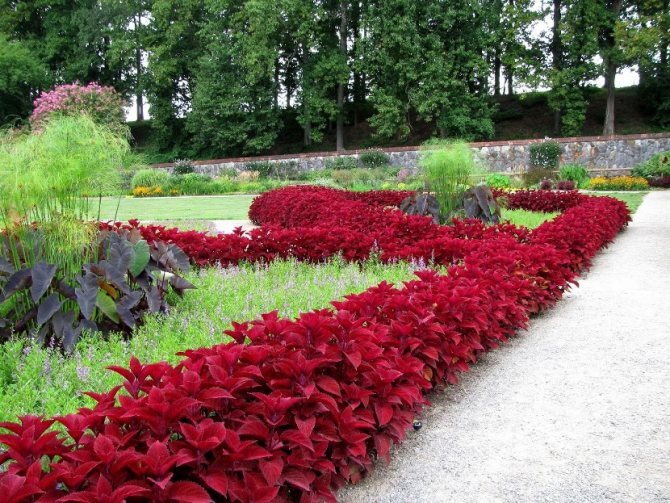

Bright ribbon border Source pinterest.co.uk
In a flower garden of this type, plants are planted according to the following principles:
- Large flowers
and the plants are planted exclusively in a row, and not in a group (the only exceptions are those plants that only in the vicinity of each other help to create beautiful dense spots).
- Plants medium height
can be planted in pairs.
- Undersized
, those that grow up to a height of no more than 15 cm, it is important to plant closely to each other, in groups, so that after they grow, they can form one continuous line.
The easiest way to create a ribbon flower bed is to use one type of plant, it is more difficult to combine three or five plants with each other. Here you need to take into account the color, and their shape, and even their texture. In such a situation, experts first recommend planting plants that will create bright accent spots, while moving from top to bottom: first large, then medium, then ground cover. It is better to draw up a plan or scheme of planting on a sheet of paper in advance, and only then strictly adhere to it.


Tulip ribbon border
This might be interesting!
In the article at the following link, read about a decorative fence for flower beds.
There are ready-made schemes drawn up by professional landscape designers. They can be easily taken as a basis, wishing to independently experiment in the described direction. The following landing options are considered the most popular:
- Looks good
alternation of rudbeckia, daylilies and Siberian irises.
- Original
a composition of sheared box trees, lavender bushes and fragrant rue, planted between box trees, is obtained.
- Very spectacular
you get a border formed with decorative onions, wormwood and lavender.
- If you plant bells, daylilies, phlox and sage in a row, you get a very beautiful framing
tracks.
Making such combinations, plants are combined in such a way that the rates of growth, proliferation, division, tendency to death and degeneration are compatible. It is important to plant in one row only what needs to be divided and transplanted at the same time.


Ribbon flower bed, as a decoration of the path
Rabatki
These flower beds are like long rectangular beds. They are most often formed along wide alleys, along elongated architectural elements, to divide the interior space into separate functional zones. In contrast to the strip border, the ridges are wider. At least it is 50 cm. The correct one is considered to be the rabatka, the dimensions of which correspond to the proportion of 1x3. With a width of 50 cm, the length of the picnic should be at least 150 cm.
There are two types of discounts:
- bilateral
;
- unilateral
.
The former are used to separate wide alleys or driveways. Inside them, plants of the same height are planted or large flowers are planted inside the rabat, and ground cover plants are placed at the edges.
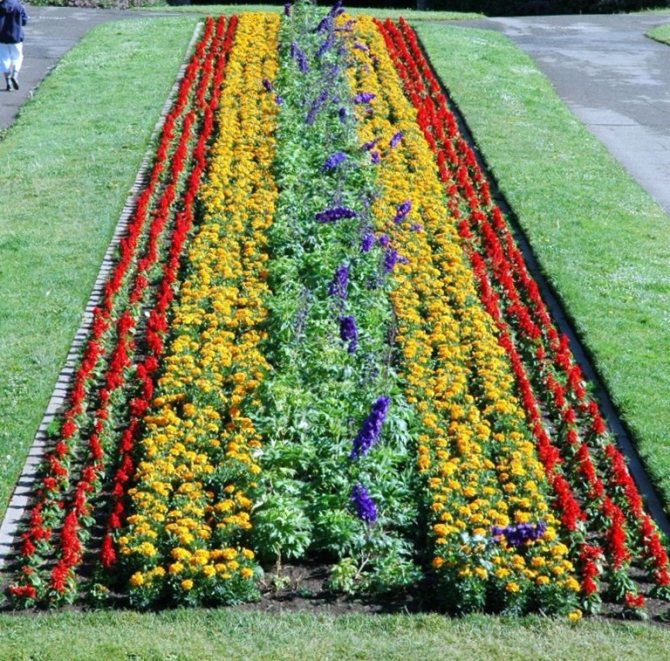

Double-sided bed in the middle of the lawn Source
The latter have an attractive design on one side only. They are most often created along fences. In the background, closer to the fence, the tallest plants are planted, then lower tiers are formed. That is why the one-sided rabatka has another name "multi-tiered".
The creation of a rabatka begins with drawing up a plan for planting plants. It is important to form some kind of pattern inside the flower bed. It can be geometric or carpet.The choice of color scheme and texture largely depends on the design style of the suburban area.
How to properly fill a flower bed with chips
For a longer-term filling of the site with chips, it should be laid on a layer of agrospan (covering material). In this form, 3-4 cm of chips are required. In the absence of a covering material, the thickness of the chip layer must be doubled. To give freshness to the site, the chips should be renewed every season, replacing the top layer. The lower one will rot over time, fertilizing the soil.
In conclusion, we can say that making a garden yourself is a fun process. However, it requires careful preparation, from choosing a style and taking measurements, to drawing up flower arrangements based on the existing features of the relief and climate.
What is a flower garden and why is it needed?
A flower garden is a general concept that unites all possible compositions of annual and perennial flowering, decorative deciduous, coniferous, deciduous and evergreen plants. Photo example:
A flower garden is a composition, limited in space, subordinate to the general style of a dacha economy. The role of a flower garden in landscape design is to be a decoration, a center of attraction, an object of admiration.


Exotic flower beds in an ordinary garden
When the task is to create a flower bed with a touch of exoticism, garden succulents are planted - crassula, sedum, aichrizon, agave, Kalanchoe, eonum, rejuvenated, Cameroonian aloe, as well as ornamental grasses and herbs - pampas grass, fescue, sedge, bearded vulture, miscanthus, etc. There is another option: to make an exotic flower bed in the spring from potted plants, and bring them into the house with the autumn cold. We hide the pots among the stones, cover them with decorative chips or bury them in the ground.
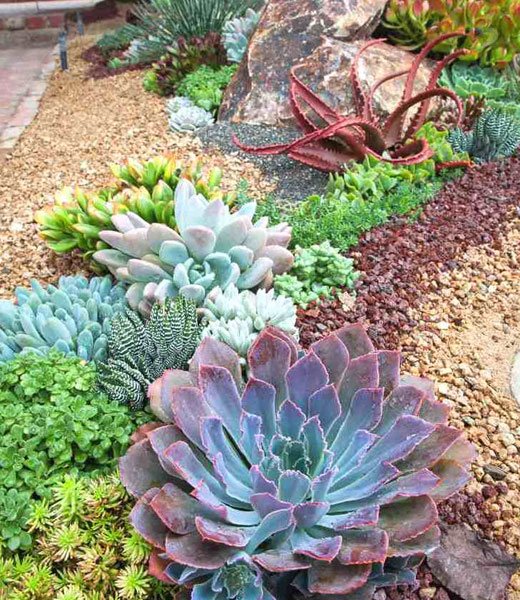

A flowerbed of garden succulents looks exotic
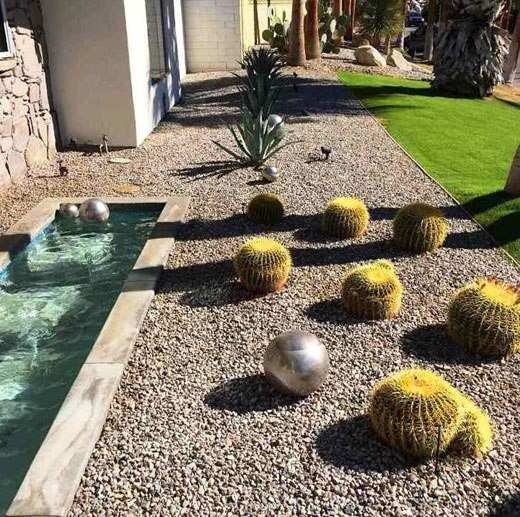

Cactus vases are hidden under the stone cover of the flower bed
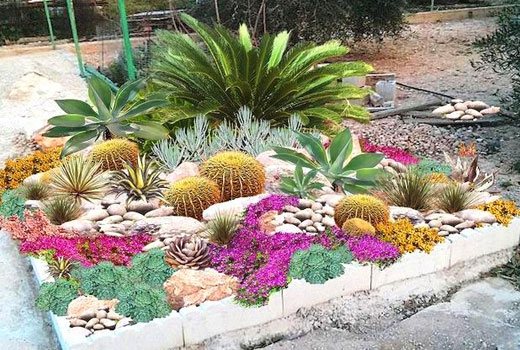

Succulents and cacti are combined into one flower bed
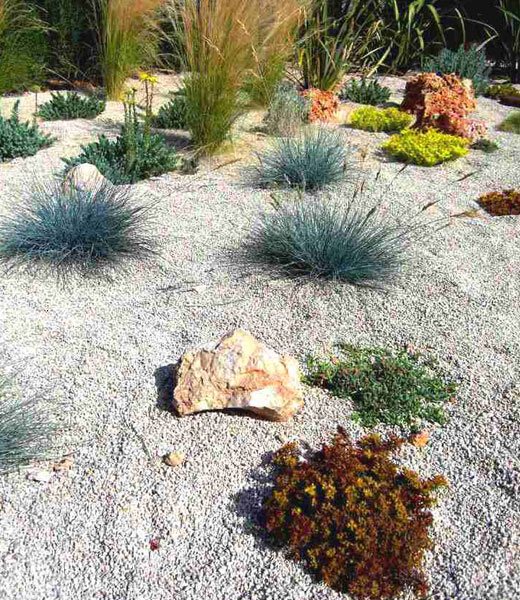

Almost a desert in a flowerbed
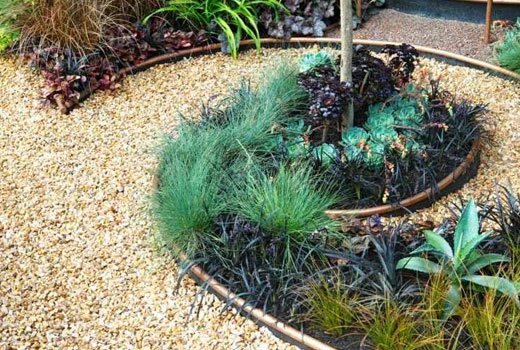

Spiral flower bed of ornamental grasses around a tree
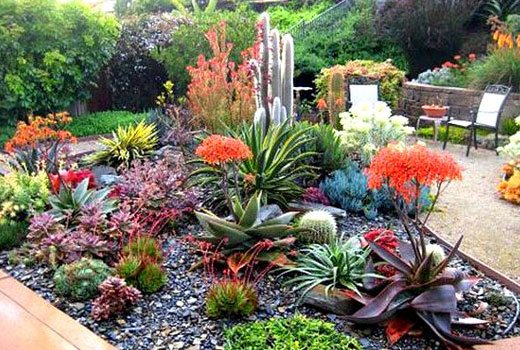

The inhabitants of this vibrant exotic flower bed are houseplants



